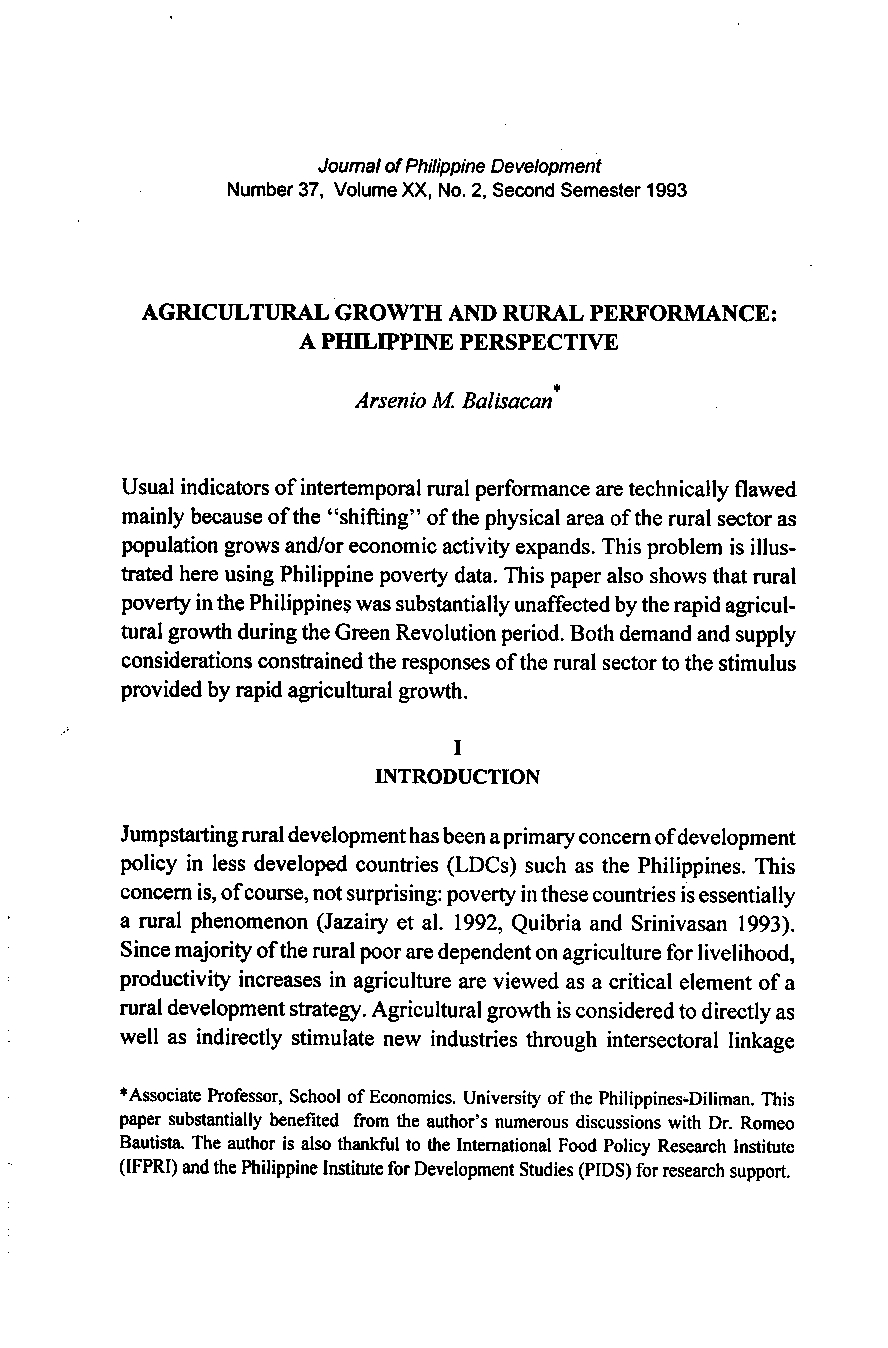Abstract
Usual indicators of intertemporal rural performance are technically flawed mainly because of the “shifting” of the physical area of the rural sector as population grows and/or economic activity expands. This problem is illustrated here using Philippine recovery data. Also shown is the fact that Green Revolution has not substantially alleviated rural poverty in the Philippines.
Citations
- Briones, Roehlano M.. 2012. Addressing land degradation: Benefits, costs, and policy directions. Philippine Journal of Development PJD, 37, no. 1c . Philippine Institute for Development Studies.
- Briones, Roehlano M.. 2010. Scenarios and options for productivity growth in Philippine agriculture: An application of the Agricultural Multimarket Model for Policy Evaluation (ample). Discussion Papers DP 2010-05. Philippine Institute for Development Studies.
- EABER. 2010. Scenarios and options for productivity growth in Philippine agriculture: An application of the Agricultural Multimarket Model for Policy Evaluation (ample). Microeconomics Working Papers 22806. East Asian Bureau of Economic Research.
- Orbeta, Aniceto Jr. C. and Maria Teresa Sanchez-Robielos. 1996. Micro interventions for poverty alleviation: The Philippine case. Discussion Papers DP 1996-13. Philippine Institute for Development Studies.
Full Issue
SHARE
